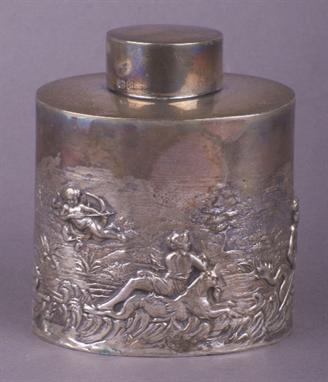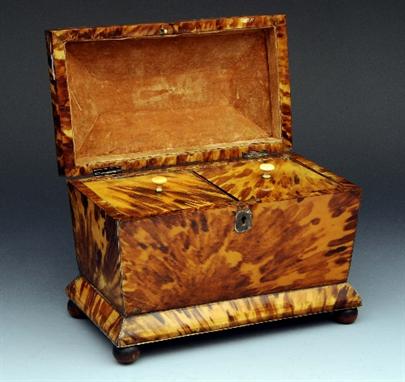We found 81455 price guide item(s) matching your search
There are 81455 lots that match your search criteria. Subscribe now to get instant access to the full price guide service.
Click here to subscribe- List
- Grid
-
81455 item(s)/page
A carved mahogany quarter chiming bracket clock, Lawson and Co. Glasgow, late 19th century, the four pillar triple fusee movement with rise/fall regulation and chiming the quarters on either eight bells or four gongs, the 5 inch full-arch dial with fine foliate scroll engraved centre with signature plaque LAWSON & CO, GLASGOW within an applied silvered Roman numeral chapter ring and brass blind fret mask incorporating Strike/Silent and Westminster/ Whittington switches and Fast/Slow regulation square to arch, the case with drapery swag carved cavetto caddy above acanthus corbel applied repeating rosette carved arched door flanked by Corinthian pilasters to front, the sides with arched sound frets, on inverted breakfronted plinth base with block feet, 43cm high. Visit www.dnfa.com for condition reports.
A French brass four-glass mantel clock, late 19th century, the eight-day bell striking movement with mercury compensated pendulum and strapwork decorated circular cream enamel Roman numeral dial (cracked), in a bevel glazed case with fluted frieze to the cavetto cornice above caddy-moulded uprights and plinth base, 26.5cm high. Visit www.dnfa.com for condition reports.
A George III painted lead tea caddy in the form of a double fronted house, late 18th century, with pitched roof above five sash windows around the front door, the front angles with quoins, the ends each with a further three windows, the interior bereft, 24cm high, 20.5cm wide, 14.5cm deep, (back panel later replaced entirely with pine). Visit www.dnfa.com for condition reports.
A George III walnut and brass mounted tea caddy, in Chippendale style, circa 1770, the hinged cover with ogee moulded edges, above conforming sides, on bracket feet, 14.5cm high, 21.5cm wide, (interior bereft); and a George III mahogany and crossbanded tea caddy, late 18th century, of rectangular section, 17cm high. Visit www.dnfa.com for condition reports.
A William IV or early Victorian tortoiseshell veneered, pewter strung and ivory banded tea caddy, circa 1840, with domed top and serpentine front, on coquilla nut feet (one detached but present), the interior with twin subsidiary covers, 10.5cm high, 13cm wide. Visit www.dnfa.com for condition reports.
A Victorian silver caddy spoon, by Charles Boyton, London 1844, fiddle pattern, with a large silver sifting spoon, by Elkington & Co, Birmingham 1861, a smaller silver bead pattern sifting spoon, London 1892, a pair of Peter, Anne & William Bateman sugar tongs, and a silver tea strainer with bowl, 218g (7 oz) grossVisit www.dnfa.com for condition reports
A 19th century mahogany sarcophagus form rectangular tea caddy with twin zinc lined lidded compartments, circular glass mixing bowl and a George III hallmarked silver caddy spoon, by Joseph Willmore, Birmingham 1816/17, (spoon displayed with staff), the caddy spoon inscribed verso with stylised capital letter A, height 19cm, width 30.5cm, depth 15.5cm, raised on four circular bun feet
A 19th century tortoiseshell tea caddy of small proportions, with silvered wire banding and shaped relief plaque, the interior with ivory rim mounts and single lidded compartment, raised on four turned ivory ball feet (one detached), height 10cm, length 12cm (wiring af and tortoiseshell losses) (Illustrated)
A set of three hallmarked silver decanter labels comprising Gin, Sheffield 1977, Sherry, Sheffield 1978 and Whisky, Sheffield 1979, all with makers mark `FH` and having repousse decoration of scrolls and foliage, also a George III mother of pearl handle hallmarked silver caddy spoon, makers mark `C&B`, Birmingham 1810-11
-
81455 item(s)/page


























